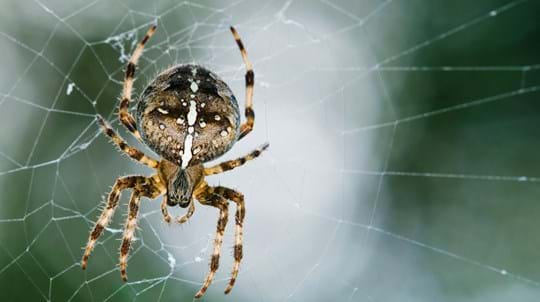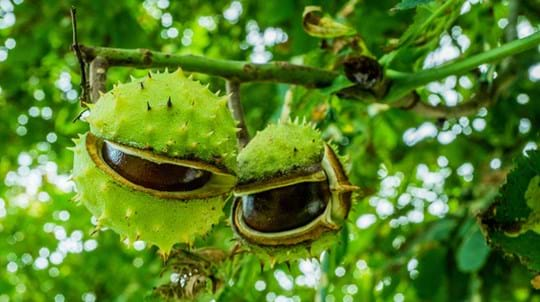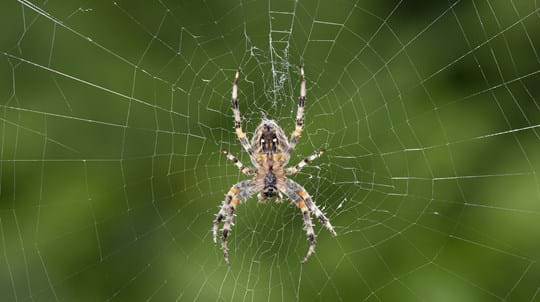Identify minibeasts
Explore woodland creepy crawlies, from bugs and beetles to snails and spiders, with a pocket-sized swatch book.
Buy it now
Digital Content Manager
It’s officially spider season. You’ve probably spotted amorous male house spiders sprinting across your living room carpet, or garden spiders looking larger as they sit on their elaborate webs in your yard. These webs are key to their survival.
There are more than 650 species of spider living in the UK, and they use their webs in a variety of clever and surprising ways. Here are some surprising spider web facts.
Ballooning spiders have been spotted more than two miles above ground level!
Making webs comes as naturally to spiders as breathing does to humans. It’s an instinct they’re born with. Different spiders build webs for different reasons:
When we’re hungry we might nip to the supermarket. For spiders, they plunder the larder strung all around them. Flies and other invertebrates get stuck in the web if they don’t see it in time – vibrations from their struggle travel along the threads to the spider and the spider moves in for the kill.
Food isn’t the sole reason why spiders build webs. Some use them to protect themselves or their young – not building a traditional-looking web but encasing themselves in a silken bundle attached to a door frame or folded cleverly into a leaf.
Some spiders use their web for speedy travel. This is called ‘ballooning’ and involves releasing strands of silk that get picked up by the wind, carrying the spider away.
When it comes to impressing the opposite sex, a web can be the main attraction. The males of some UK spider species may pluck a female’s web suggestively, so she knows the vibration signals a potential mate rather than dinner.
Not all spiders build webs. Those that don’t may flatter females with nuptial gifts, or demonstrate their best dance moves.
Explore woodland creepy crawlies, from bugs and beetles to snails and spiders, with a pocket-sized swatch book.
Buy it nowGarden spider webs can be up to 40cm wide.
Spider webs are made of silk, which itself is made up of proteins. A single spider can often produce different kinds of silk, which add different components to a web. One type may be particularly strong, while another is more flexible, and another is stickier. Garden spiders are one of the UK species that build these more elaborate webs.
It’s thought that a strand of spider silk long enough to stretch around the Earth would weigh the same as a bag of sugar. Yet, it’s as strong as Kevlar and can be 100 times tougher than the equivalent amount of steel.
Spiders make silk using special organs on the underside of their abdomen called ‘spinnerets’. When it’s still inside the spider, the silk is stored in liquid form in internal silk glands. As it passes through the spider to its spinnerets, it gradually hardens. When it reaches the spinnerets – which act like icing nozzles – it is pulled out by gravity or the spider’s hind leg to be used as a building material, hunting tool or even a courtship platform.
Not all spider webs look the same. Some spiders, like the house spider, make a flat sheet-web that leads to the nook where they spend most of their time. Others, like the woodlouse spider, don’t spin a web at all, chasing prey down on foot rather than lying in wait on their silken home.
The garden spider makes the intricate, traditional spider webs we’re used to seeing, often constructing a new one every day. They’re fragile in comparison to other spider webs, tearing in strong wind and rain or getting clogged up with dust. Orb spiders often rebuild each night, eating their old silk to recycle the amino acids.
Spiders are an integral part of the woodland ecosystem, and after discovering new spider web facts every year, scientists are even using them to inspire engineering and medical science.

Trees woods and wildlife
Find out more about woodland spiders. Even through they might not be the UK's most loved animal, they are pretty special.

Blog
Rachel Hoskins • 30 Aug 2019

Blog
Rachel Hoskins • 09 Sep 2019